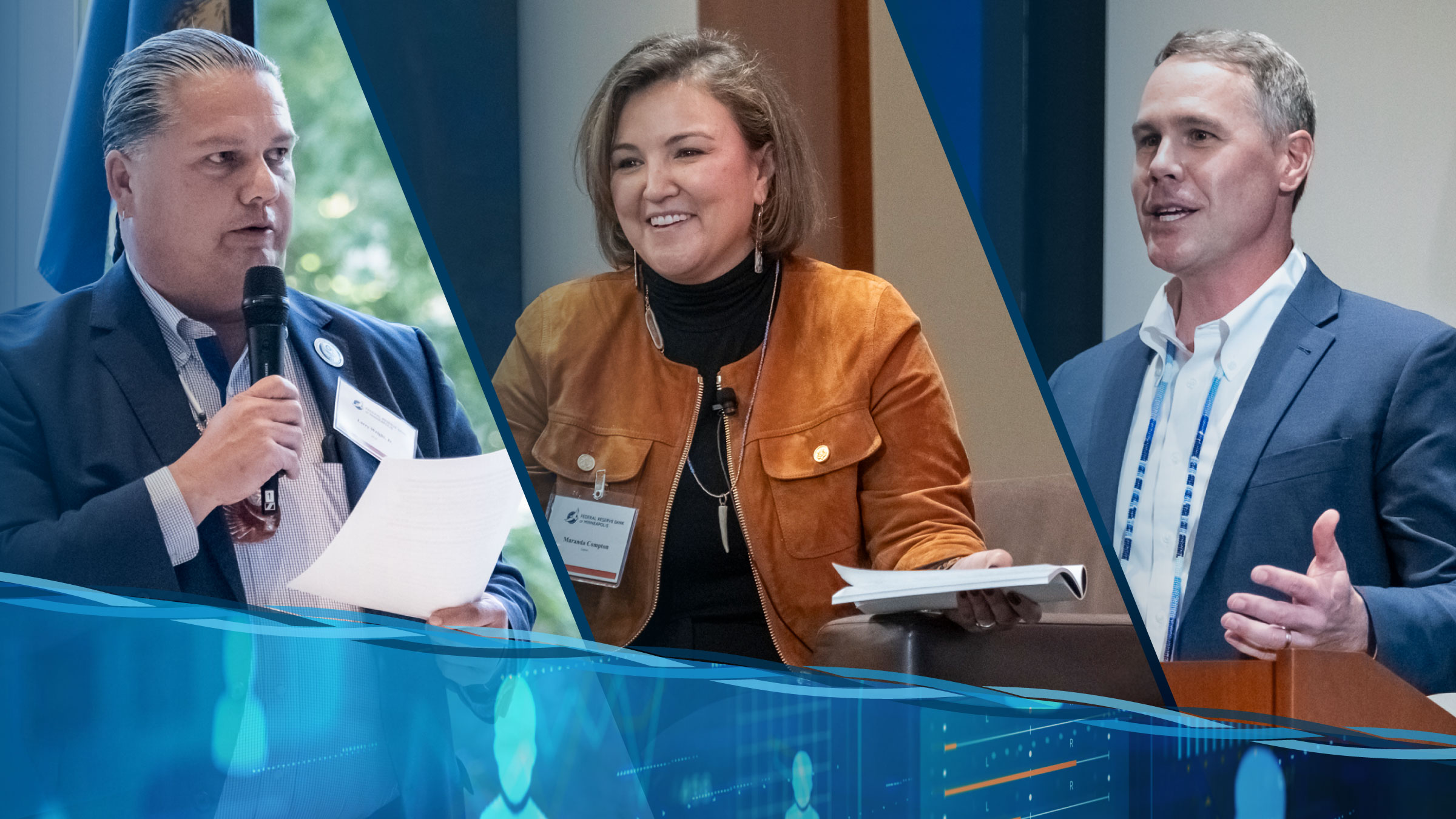Delays in the production of title documents at the U.S. Department of the Interior’s (DOI’s) Bureau of Indian Affairs (BIA) are complicating the mortgage process for home buyers on tribal trust land. Housing shortages, trust land development, and equitable capital access are critical issues in Indian Country, and improving delivery timelines for certified Title Status Reports (TSRs) would make progress on all three fronts. We propose the following recommendations to achieve timely TSR production and an improved trust land home mortgage process.
- Preserve success within the BIA. Expand best practices where possible.
- Require regular reporting on TSR-processing timelines.
- Bring all BIA offices into compliance with existing timelines and consider statutory deadlines for title recording and certified TSRs.
- Create an electronic portal for residential mortgage packages to provide certainty and efficiency to borrowers and lenders.
- Create an interagency report card, with regular updates, to spur collaboration between tribes and federal agencies, build a foundation for accountability, and help identify solutions to trust land title issues for residential mortgages.
- Remove barriers between tribes and tribal land records.
- Consider a centralized mortgage-processing center.
Land rights and development are central to the history of Indigenous people and the future of tribal sovereignty and economic development. A substantial portion of tribal lands in the U.S. are held in trust by the federal government and managed by the DOI.1 The agency’s management role is an essential feature of the trust relationship,2 and the enormous need for tribal infrastructure and development is well-documented.3 At stake in federal Indian Country administrative functions is the economic potential of millions of acres of land and the prosperity of the tribal nations to which that land belongs.
TSRs and Native American homeownership
Quality housing is fundamental to human dignity and well-being, yet unavailable to millions of Americans. For Native Americans in tribal areas alone, a U.S. Department of Housing and Urban Development (HUD) survey estimated 68,000 units were required for the period 2013–2015 to alleviate overcrowding and replace “severely physically inadequate stock.”4 While many tribes rely on rental units for housing, homeownership—including homeownership on tribal trust land—has gained momentum as an additional remedy for housing problems for some tribes.5
Certified TSRs from the BIA are required for underwriting trust land home mortgages and for selling those mortgages into the secondary market. However, borrowers consistently report delays in the delivery of certified TSRs that result in longer mortgage timeframes for trust land than for fee simple land. The BIA recently maintained in a U.S. Senate Committee on Indian Affairs hearing that TSR-processing speed is adequate and averages only a few days. But Councilman Nate Mount of the Fort Belknap Indian Community testified at the same hearing that prospective borrowers from the Fort Belknap tribe have waited over a year for certified TSRs.6 Other groups in Indian Country have shared the same complaint: a 2019 report from the South Dakota Native Homeownership Coalition7 and a 2009 piece from the National Congress of American Indians (NCAI) and the First Nations Development Institute (FNDI)8 both discuss TSR timelines as barriers to trust land development.
What is a TSR?
TSRs cover legal descriptions, liens, transactions, and all other supporting documents for a tract of tribal trust land. Working with tribal governments and individual Native Americans, the BIA manages over 50 million acres of trust land.9 Tribal trust land is subject to a title-recording process managed either by the BIA Office of Trust Services’ Division of Real Estate Services and Division of Land Titles and Records (DLTR) or in tandem with tribes that have taken on some or all those BIA functions through the Indian Self-Determination and Education Assistance Act of 1975 (ISDEAA).10 Through a contract with private information technology consultant CGI, the BIA uses the Trust Asset and Accounting Management System (TAAMS) to track titles, record leases and other contracts, and generate TSRs. TSRs are managed and ultimately accessed by tribes and individual Native Americans through the DLTR’s 12 regional Land Title and Records Offices (LTROs) and, where applicable, tribal LTROs.11 The DLTR describes LTRO recording functions as “similar to recording at a County Recording Office.”12
There are three different kinds of TSRs: informational, which are not required for mortgage lending; first certified; and final certified.13 Extended processing times for both first certified and final certified TSRs can ultimately disrupt access to capital for tribal members, though at different points in the mortgage process.
An informational TSR is a “non-certified and non-verified report of ownership and encumbrance” pulled directly from TAAMS. For Indian trust land, informational TSRs are analogous to public property records at a county office. Informational TSRs do not require additional verification for release and are not accepted by home mortgage lenders as accurate and complete assessments of encumbrances related to the land and lease or for the mortgage package.
To get a home mortgage on tribal trust land, the applicant must first get tribal approval for a trust land lease. The tribal approval process varies with each tribe but typically requires a council resolution approving the lease. With that lease in hand, the applicant can begin the process to acquire the first certified TSR, which records the tribal lease and is required for underwriting the loan application. The first certified TSR includes the legal description, lease, and encumbrances. LTRO staff approve it as being true and up-to-date in TAAMS concerning the land status and tribal lease recording.
The final certified TSR is issued after the mortgage is closed; this TSR records the mortgage and amendments, including easements and rights of way. The secondary mortgage market, which mortgage lenders depend on for capital, requires this final recording. The final certified TSR is also required for federal mortgage products like the HUD Section 184 Indian Home Loan Guarantee Program.14
Delayed TSRs slow down loans and housing for Native Americans
While the challenges in financing trust land projects are surmountable, title processing is a factor that can slow down loans and discourage lenders from building Indian Country expertise. Financial institutions are accustomed to and rely on certainty in processes and timing that not all BIA offices consistently provide. In an analysis of HUD data on the Section 184 program, the Center for Indian Country Development (CICD) at the Federal Reserve Bank of Minneapolis found that since the program was extended to fee land in the early 2000s, over 90 percent of Section 184 guarantees have been for home mortgages on fee simple land.15 The finding suggests that mortgages for Native Americans are much easier on fee land—where the BIA TSR process doesn’t apply—than on trust land.
Tribes and the federal government have been trying to advance tribal homeownership and resolve certified TSR delay issues as far back as the One-Stop Mortgage Center Initiative era in the 1990s.16 An executive memorandum signed by President Clinton on August 6, 1998, addressed “requirements to gain clear title from the Bureau of Indian Affairs” as an issue that tribal “borrowers must grapple with during the mortgage lending process.”17 A subsequent BIA memorandum dated February 23, 1999, aimed to “reaffirm our policy that processing titles and leases for homeownership purposes should be the number one priority of all realty transactions” and specified that “processing these actions should not exceed 30 days.”18 The commitment to a 30-day timeline was reaffirmed in a September 2005 memo from the George W. Bush administration.19 Model documents developed during this time, including tribal mortgage codes and residential leases, are still in use or serve as starting points for tribal lease language.20
Tribes hoping to improve trust land management and title functions can take matters into their own hands through the ISDEAA. However, self-determination contracting can come with considerable costs in the negotiation and approval phases, in addition to costs of the ongoing tribal administration of the services. The federal government should adequately fund tribes’ efforts to manage their own lands and make the ISDEAA more impactful in Indian Country, but a national solution to BIA administrative issues is still warranted for tribes that do not have the resources to take over BIA land work in the near future. For these reasons, our proposals focus on solutions at the level of the BIA rather than options for individual tribes.
Policy and administrative recommendations
The goal of BIA land management reform should be to achieve efficient and reliable processes for developing trust land. BIA offices should understand the importance of their role in supporting tribal communities and economic development. With respect to homeownership, the BIA should strive for equity for individual Native Americans and for tribal nations pursuing residential land development and trust land mortgage financing. That is, BIA processes, including the production of certified TSRs, should match industry standards for home loans on fee simple land nationwide. CICD recommends the following actions to improve the BIA’s TSR process.
Preserve success within the BIA. Expand best practices where possible.
Some BIA offices, including those in Portland, Oregon, and Aberdeen, South Dakota, are reported to already offer certified TSRs in a timely manner.21 Solutions to the national problem should neither negatively affect those tribes and BIA offices that are already performing well nor create excessive costs or punitive mechanisms that ultimately draw resources away from other critical BIA services. Offices that have been successful should share best practices across the BIA.
Require regular reporting on TSR-processing timelines.
Regular reports on certified TSR delivery timelines from all BIA offices will allow tribes, organizations that serve tribes, and lenders to identify best practices and target the issues that cause delays. Without data and transparency, it will be difficult to measure success and hold the BIA accountable. Reports should include the number of title requests received, the number of requests successfully processed, the amount of time required to process each request, and the reasons requests were delayed or denied. A lender recently reported to CICD that one certified TSR was requested and finished in less than four hours! Without a clear, systemic understanding of the differences between that TSR and others that take over a year, it will be difficult to identify the optimal solutions.
Bring all BIA offices into compliance with existing timelines and consider statutory deadlines for title recording.
The BIA should work to comply with existing internal deadlines for TSR processing. The BIA’s mortgage handbook presently indicates a 30-day timeline for leasehold mortgage approval: 10 days for initial assessment of the application and 20 days for review upon receipt of the completed mortgage package.22 A TSR process that can take over a year completely undermines these timelines.
Because the use of internal memoranda has thus far been ineffective in achieving consistency across BIA offices, the ultimate solution may include statutory deadlines for completing certified TSRs. This strategy would require in statute that TSRs be produced within timelines that are acceptable to the needs of borrowers, lenders, and tribes. Any new timelines should not be longer than those already found in BIA policy. However, it is unclear how statutory deadlines could be enforced effectively.
Create an electronic portal for residential mortgage packages to provide certainty and efficiency to borrowers and lenders.
As electronic platforms are integrated into all facets of modern bureaucracy and life, increased digital access to trust land records is inevitable. The only question is when Indian Country will have access to better online resources. To improve the residential mortgage process, the BIA should provide a secure online portal for the submission and review of all necessary documents for the mortgage package, including certified TSRs. BIA processes should be trackable, in terms of key steps and ownership of those steps inside the agency. BIA Director LaCounte discussed this kind of portal at the 2019 U.S. Senate hearing.
Create an interagency report card, with regular updates, to spur collaboration between tribes and federal agencies, build a foundation for accountability, and help identify solutions to trust land title issues for residential mortgages.
To better focus federal support for tribal homeownership and to form a basis for better performance, tribes and agencies need shared data. The BIA and HUD, as well as other federal agencies with housing programs in Indian Country, should establish an interagency report card that tracks the delivery of federal Indian housing programs, including BIA data on TSR processing. This would build a foundation to discuss how to increase the use of federal housing and mortgage products in addressing Indian Country housing needs. As an example, the report card could tell tribes and HUD exactly how often and why title recording was a determining factor in a delayed or abandoned application for a Section 184 guarantee.
Remove barriers between tribes and tribal land records.
All trust land records should be easily accessible online with appropriate user rights. Accessing TAAMS can be burdensome for tribes and require a lengthy approval process. The federal system for trust land record keeping should not serve as a barrier to maintaining the trust relationship and managing trust lands. Tribes and individual Native Americans should be able to electronically submit documents to and track applications with the BIA with minimal practical or financial barriers. While privacy concerns for individual Native Americans are serious, this should not be a barrier to bringing fair and accessible record digitization—administrative equity—to Indian Country.
Consider a centralized mortgage-processing center
A centralized BIA mortgage- and mortgage-title-processing center could help build staff expertise and consistency across the country. This solution could provide borrowers and lenders certainty about the process and where to direct questions on individual loan applications. However, centralization may be difficult to implement and incompatible with the regionalized structure of the BIA. Fully centralizing BIA mortgage processing should be considered more carefully after more information has been gathered, but a national contact for regional offices—especially those with limited mortgage experience—could be beneficial. It is likely that there are already experienced staff at the BIA that could take on those contact responsibilities.
Moving forward
Congressional appropriations may be necessary for reform to be meaningful. The BIA is chronically underfunded, and any solution that does not take into account the administrative reality of the BIA in terms of staffing, training, and costs will likely result in confusion in the short term and ultimately disappoint the Native peoples the reform is meant to help. However, fulfilling this piece of the trust responsibility should be seen as an investment in Indian Country with many long-term economic benefits for tribal nations and surrounding communities.
Federal Indian land management should operate with the well-being and economic development of tribal nations and Indigenous peoples as the highest priority. Changing the narrative that trust land development and homeownership are too difficult for borrowers and lenders can start at the BIA. Indian Country needs a federal government that supports, rather than blocks, economic development.
Shortening the TSR timeline: A proposal to end delays that hinder Native homeownership [pdf]
Endnotes
1 “Trust property includes lands and other assets owned in trust by the United States for the benefit of Indian nations or individual Indians.” From Matthew L.M. Fletcher, Federal Indian Law, §4.3. West Academic, 2016.
2 Ibid, §5.2.
3 Broken Promises: Continuing Federal Funding Shortfall for Native Americans. U.S. Commission on Civil Rights, December 20, 2018.
4 Nancy Pindus, G. Thomas Kingsley, Jennifer Biess, Diane Levy, Jasmine Simington, and Christopher Hayes, Housing Needs of American Indians and Alaska Natives in Tribal Areas: A Report from the Assessment of American Indian, Alaska Native, and Native Hawaiian Housing Needs. U.S. Department of Housing and Urban Development, Office of Policy Development and Research, January 2017. Pages 73–76.
5 Patrice Kunesh, editor, Tribal Leaders Handbook on Homeownership. Federal Reserve Bank of Minneapolis and Enterprise Community Partners, 2018.
6 At the hearing, BIA Director Darryl LaCounte mentioned a TSR turn-around time of only three days. This article in no way means to impugn the character of the staff and leadership of the BIA, which includes many Indigenous people, including Director LaCounte. For the statements of Director LaCounte and Councilman Mount, see Lending Opportunities: Opening the Door to Homeownership in Indian Country. S. HRG. 116–150, U.S. Senate, 116th Congress, October 16, 2019.
7 Mortgage Lending on South Dakota’s Indian Trust Land: Findings from a Survey of Lenders. South Dakota Native Homeownership Coalition, October 2019.
8 Karen Edwards, Peter Morris, and Sharon RedThunder, Exercising Sovereignty and Expanding Economic Opportunity through Tribal Land Management: A Study Addressing the Range of Options to Expedite Land Title Processing on Indian Lands. NCAI Policy Research Center and First Nations Development Institute, 2009. This NCAI-FNDI analysis of tribes that have taken over trust land title responsibilities from the BIA identifies many of the same issues discussed here.
9 OST Statistics and Facts web page. U.S. Department of the Interior, Bureau of Indian Affairs, Office of the Special Trustee for American Indians. Accessed May 27, 2020.
10 “The Act allowed for Indian tribes to have greater autonomy and to have the opportunity to assume the responsibility for programs and services administered to them on behalf of the Secretary of the Interior through contractual agreements.” From the Self-Determination web page. U.S. Department of the Interior, Bureau of Indian Affairs. Accessed June 1, 2020.
11 Division of Land Titles and Records web page, U.S. Department of the Interior, Bureau of Indian Affairs. Accessed May 29, 2020.
12 Beth A. Wenstrom, “Land Title and Records Offices HUD Section 184 Backlog and Modernization Project.” Northwest Region Mortgage Conference, Spokane, Washington. U.S. Department of the Interior, Bureau of Indian Affairs, Office of Trust Services, Division of Land Titles and Records, February 7, 2017.
13 The final certified TSR is often called the second certified TSR or subsequent certified TSR.
14 For more on this program, see HUD’s Section 184 Indian Home Loan Guarantee Program web page.
15 See the written testimony of former CICD Director Patrice Kunesh at the U.S. Senate hearing referenced in footnote 6.
16 One-Stop Mortgage Center Initiative in Indian Country: A Report to the President. U.S. Department of Housing and Urban Development and U.S. Department of the Treasury, November 2000.
17 President William J. Clinton, Memorandum on Economic Development in American Indian and Alaska Native Communities. Government Publishing Office, August 6, 1998.
18 Hilda Manuel, Memorandum: Priority Processing for Home Ownership. U.S. Department of the Interior, February 23, 1999.
19 W. Patrick Ragsdale, Memorandum: Certified Title Status Reports. U.S. Department of the Interior, September 29, 2005.
20 Leasing Requirements web page. U.S. Department of Housing and Urban Development. Accessed June 22, 2020.
21 See footnote 8.
22 Indian Affairs Mortgage Handbook 52 IAM 4-H. U.S. Department of the Interior, Bureau of Indian Affairs, Office of Trust Services, Division of Real Estate Services. July 15, 2019.






